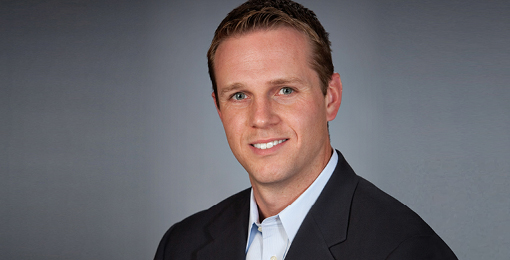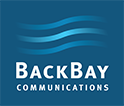
How would you characterize the strength of Eagle’s brand and what are some of the key attributes that you seek to convey?
Within certain segments and markets, Eagle has a very strong brand. In North America and Europe, we’re known for our middle- and back-office solutions and are recognized among the largest investment managers as being able to support the complex and disparate needs of an expansive and growing organization. In the Middle East or in the Asia Pacific region, among sovereign wealth funds, insurers and asset owners, I think our brand is still emerging. Generally, though, the largest global investment firms equate Eagle with a powerful and comprehensive suite of solutions that enable efficiency and help manage the data that is essential for front-office decision making.
As a subsidiary of BNY Mellon, Eagle benefits from the broader BNY Mellon brand, while at the same time we are helping BNY Mellon to differentiate as a technology leader. For Eagle, in a market like financial technology, where there is so much movement and M&A, clients need to trust that we’ll be around in five years or even in 20 years. They also need to be comfortable that we’ll continually re-invest in our technology, and solution set. They also need to know that our solutions can evolve with their business, whether it’s initiatives to enter new markets, introduce new asset classes or simply to keep up with the data volumes that come with AUM growth. There is a large volume of change in financial services today, so the resources and stability of BNY Mellon provides a distinct competitive advantage for Eagle. Clients recognize this and it’s certainly embedded in the Eagle brand.
You mentioned that Eagle’s brand may be perceived differently from markets where Eagle has a longstanding presence to regions that may be newer for Eagle. How does the strategy change from a marketing and messaging perspective?
By and large, our outreach in the newer markets tends to be more educational in nature. We’re working to reach decision makers by identifying some of their key needs and then explaining – through PR, thought leadership content, industry conferences, collateral and other programming – how our solutions can help solve these business challenges. We have a team on the ground in these markets that is building strong relationships and we want to help them by creating opportunities to advance the conversation. They’re getting to know the businesses of prospective clients in local regions, allowing us to take a targeted approach when it comes to messaging to those that may be less familiar with our solutions.
This is also aligned with our strategy for the more mature markets, where we’re very much recognized as a leader within the market segments that we support. The difference is that we don’t have to focus as much on who Eagle is, but rather how we can help investment firms address new challenges. In this case, our strategy is more of an account-based approach where we are helping our sales team to build relationships, and we are providing thought leadership and evidence of how Eagle’s solutions can help.
What might be a good example that highlights these types of educational efforts?
We can point to quite a few examples across the global markets that Eagle serves. In a less mature market for Eagle, such as Australia, we’ve done a lot of outreach geared toward the superannuation funds and asset owners. There has been a pronounced insourcing trend in this market, so we’ve placed a lot of emphasis on highlighting the ways we have helped other clients navigate these types of business initiatives. Tactically, we’ve participated at a number of conferences, we’ve drafted blogs on the topic, we’ve placed bylines in key publications and we’ve positioned our team there as real thought leaders. We want our local team to be seen as trusted advisors who can help guide organizations and business leaders who may not know where to begin with such a complex undertaking.
In North America, meanwhile, we recognized that many investment firms are struggling with legacy systems that are either obsolete or effectively being “sunsetted” by their vendors through inattention. This seems like a simple problem, but the inner workings of the back-office technology that powers reporting and regulatory compliance and feeds downstream users with necessary data and information are incredibly complex and intertwined. Executives are discovering that these legacy systems don’t just pose an operational risk, they also prevent them from launching new products or pursuing other growth initiatives. Solving for legacy systems is certainly not as easy as simply swapping out an obsolete system for a more advanced platform. So we’ve spent a lot of time helping key prospects running on specific legacy platforms to understand how to address a legacy replacement and how our experience will decrease risk and help them to be successful.
How has Eagle’s approach to marketing evolved over time?
In the past, we had spent considerable effort in promoting the Eagle brand and building market awareness around our core solutions. This often resulted in speaking generically to our product offering with less focus on the business solutions that we provide. As a result, we also had less of a focus on helping the sales team to build relationships with key decision makers across the top-tier global investment management firms.
Today we spend more time working to understand how our clients are currently using our solutions and how they could use Eagle to solve new challenges that are emerging every day. We then work to connect the dots to highlight how we can help organizations address these demands. It may be a new regulation that seeks greater data granularity and reporting transparency or it may be an investment strategy, which requires a new approach to investment operations. I think we’re much more targeted today in that we aim to speak to specific problems. We’ve moved away from promoting individual features in a vacuum, which has helped clients understand where we can bring material value to their organizations.
In a way, we’re still evolving. We want to spend more time and effort reaching individuals versus the market at large. We will still maintain a drumbeat of activities aimed at sustaining brand awareness, but we’ve found that thought leadership or other content can be more effective to arm our sales and relationship management organization, so they can build and cultivate relationships. We operate in a very narrow segment, so we’re not trying to reach a million eyeballs, necessarily; we’re trying to reach the 400 to 500 or so decision makers at global investment institutions who are looking for answers to questions that we can and have solved.


